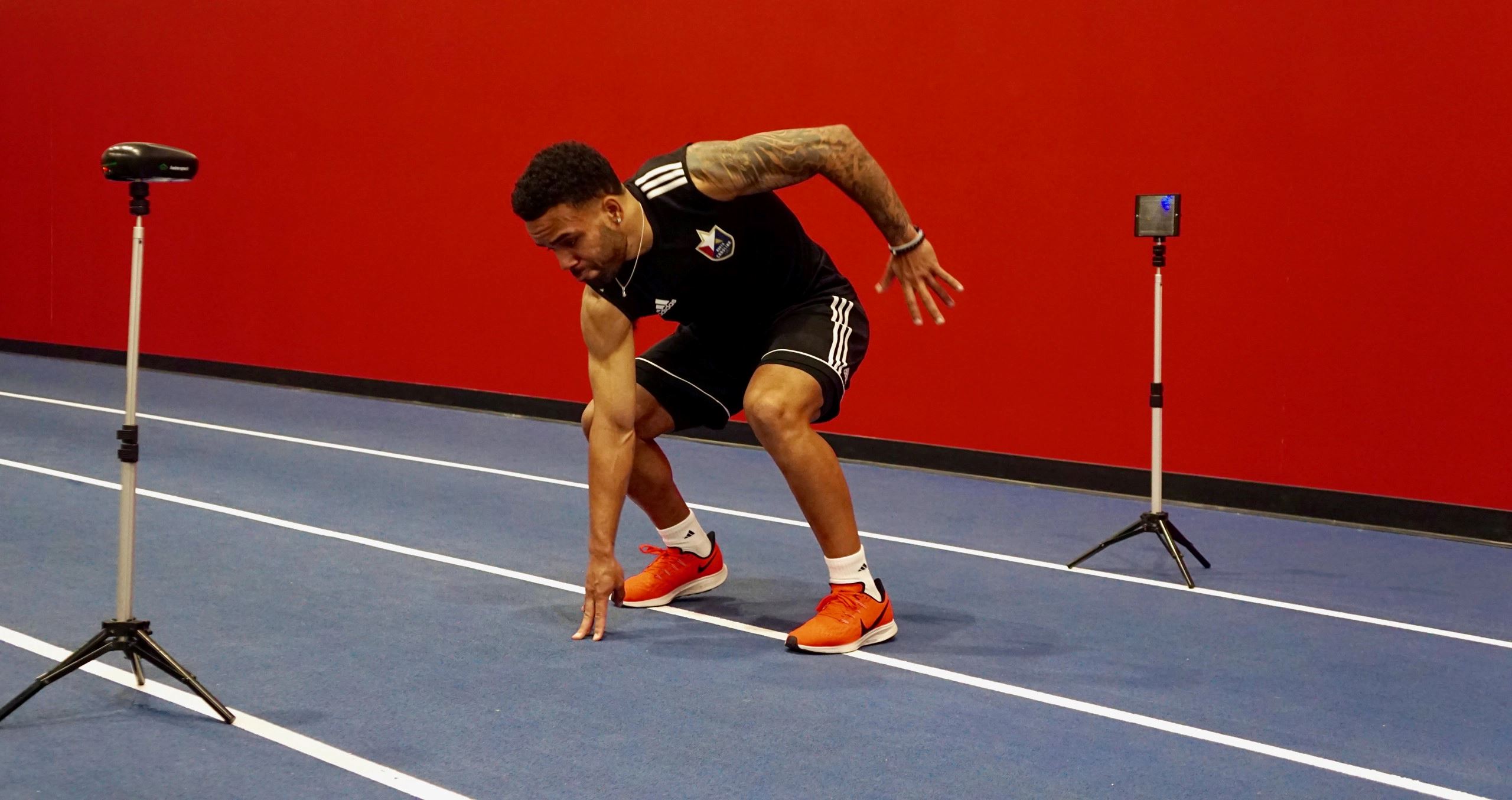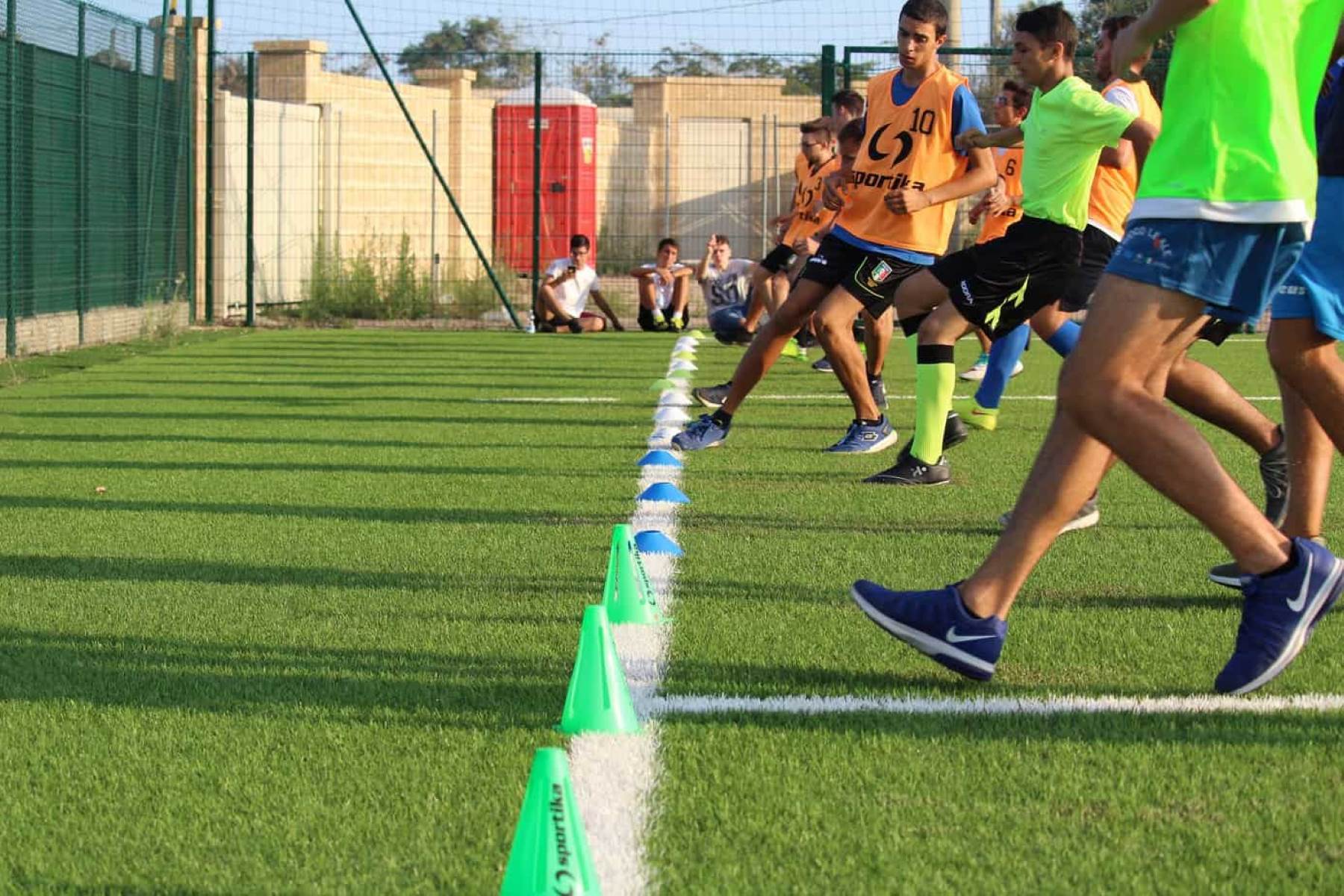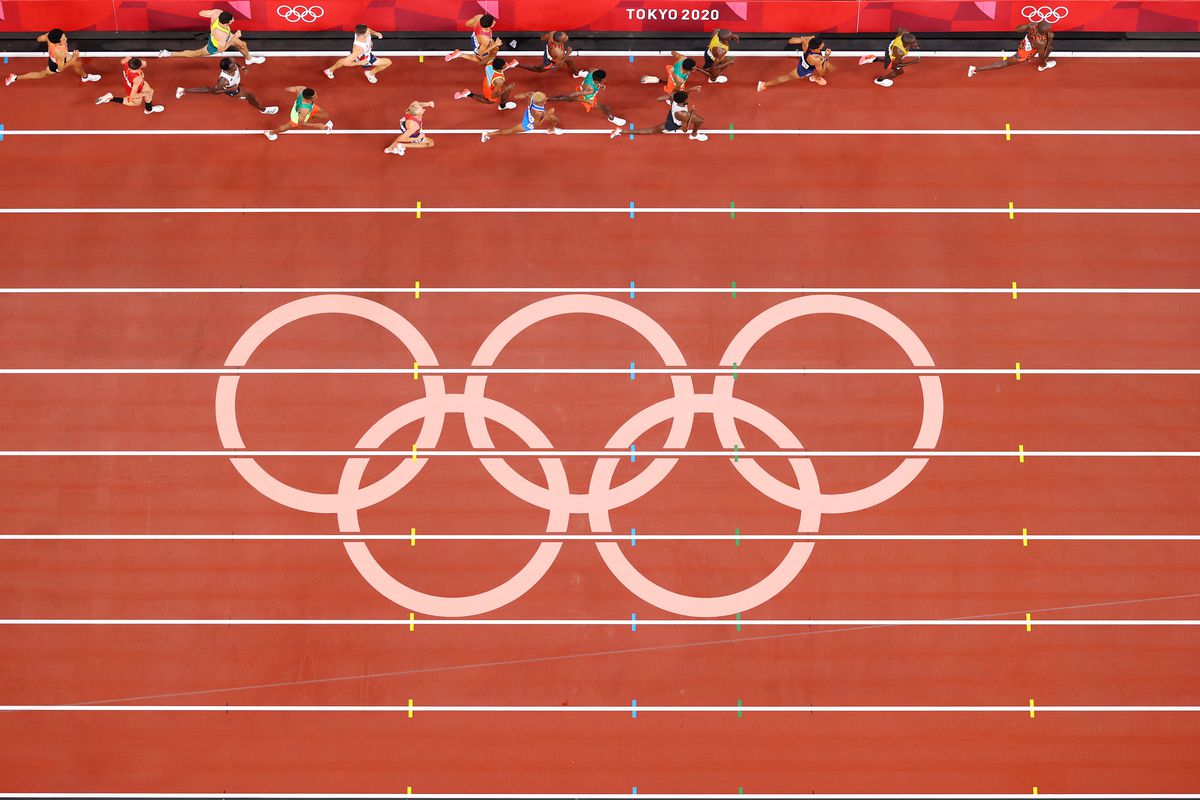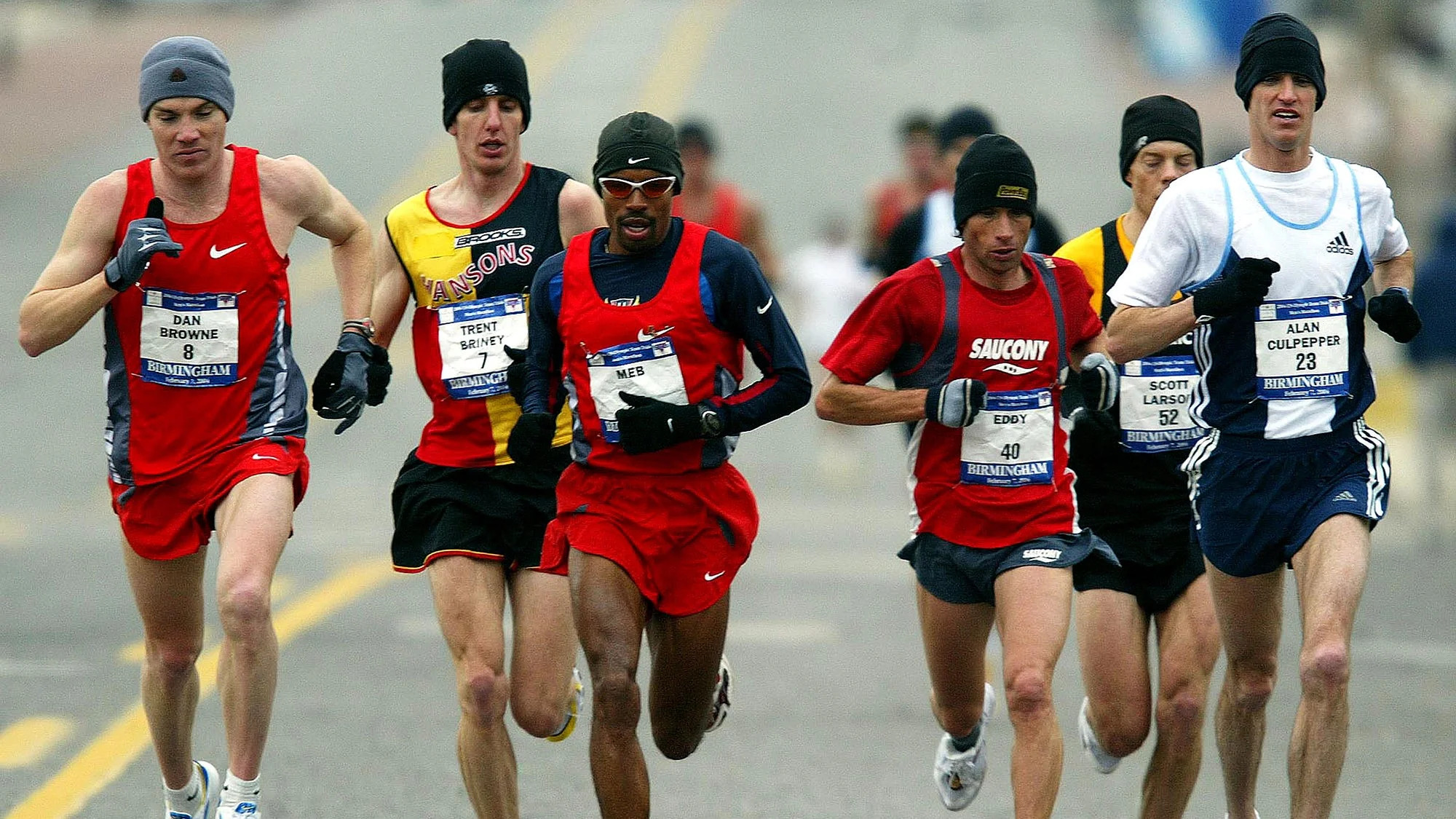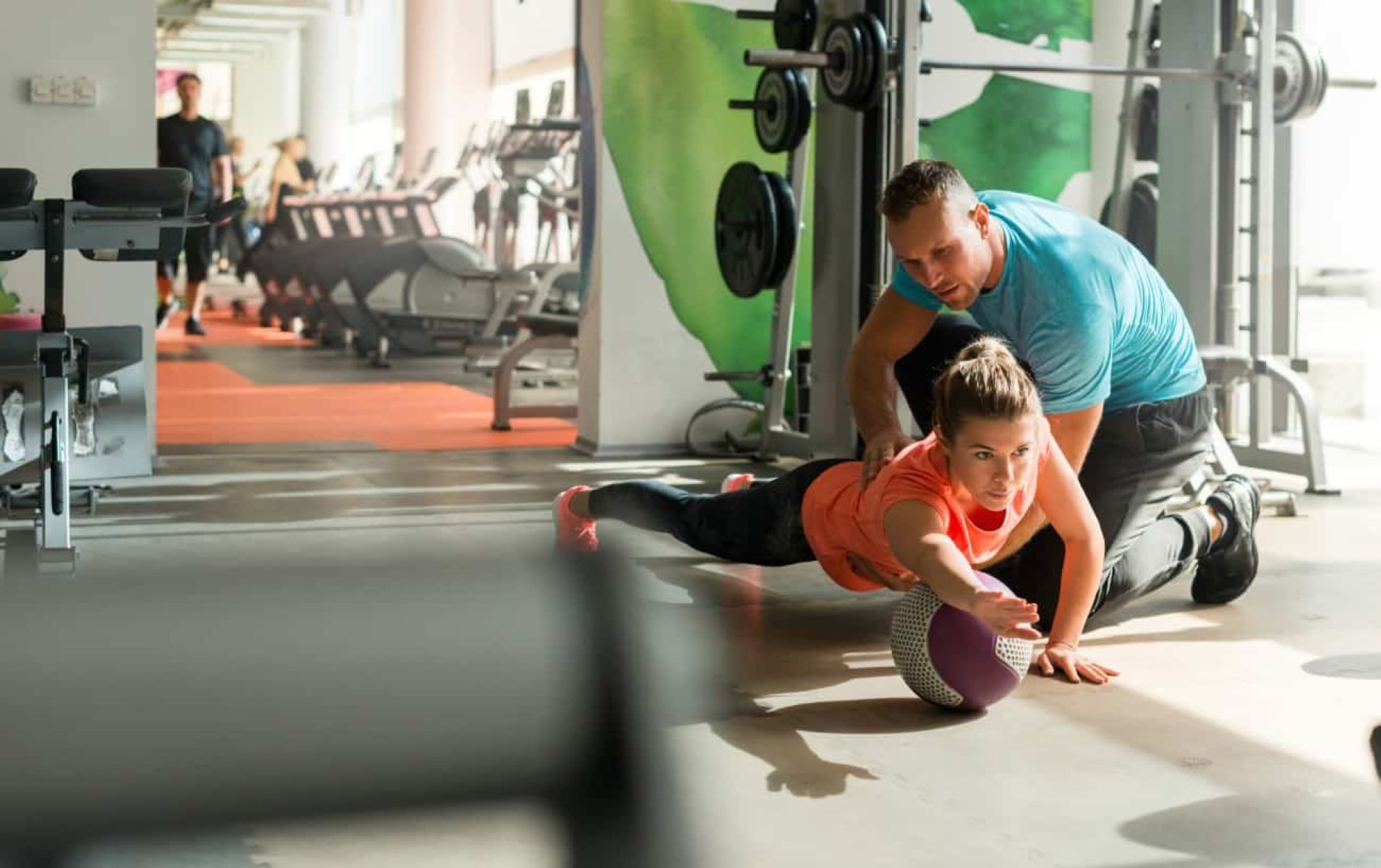Home>Misc>Featured>Define Aerobic And Anaerobic Power. How Does Each Relate To Athletic Performance?


Featured
Define Aerobic And Anaerobic Power. How Does Each Relate To Athletic Performance?
Modified: January 2, 2024
Learn about the difference between aerobic and anaerobic power and how each impacts athletic performance. Explore the importance of these factors in optimizing your training routine.
Introduction
Athletic performance is a complex combination of various physical factors, including power, endurance, speed, and agility. Two key elements that play a crucial role in determining an athlete’s performance are aerobic power and anaerobic power. While both contribute to overall athletic ability, they have distinct characteristics and impacts on performance.
In order to understand the relationship between aerobic and anaerobic power and how they relate to athletic performance, it is important to define these terms and explore their individual characteristics. Aerobic power refers to the body’s ability to generate energy through the utilization of oxygen, while anaerobic power refers to the body’s ability to generate energy without the need for oxygen.
Aerobic power, also known as aerobic capacity or cardiorespiratory fitness, is a measure of how efficiently the body can consume and utilize oxygen during prolonged exercise. It primarily relies on the aerobic energy system, which uses oxygen to break down carbohydrates and fats to produce fuel for the muscles. Aerobic power is essential for activities that require endurance, such as long-distance running, cycling, or swimming.
On the other hand, anaerobic power is the body’s ability to generate energy quickly and efficiently, without relying on oxygen. It primarily depends on the anaerobic energy systems, such as the ATP-PCr system and the glycolytic system, which provide rapid bursts of energy for high-intensity activities. Anaerobic power is crucial for explosive movements, such as sprinting, jumping, or lifting heavy weights.
The relationship between aerobic and anaerobic power is interconnected and interdependent. While they are distinct energy systems, they often work together to meet the demands of different types of physical activities. For example, during endurance exercises, aerobic power plays a dominant role in providing the necessary energy for sustained effort. However, during intense bursts of activity or maximal efforts, anaerobic power kicks in to supplement the energy production.
Athletic performance can be enhanced by improving both aerobic and anaerobic power. Improving aerobic power can increase endurance and stamina, allowing athletes to maintain higher intensity for longer periods. In contrast, enhancing anaerobic power can improve explosive power, speed, and the ability to perform quick and powerful movements.
Understanding the relationship between aerobic and anaerobic power is crucial for athletes and coaches in designing training programs that target specific energy systems. By incorporating exercises that improve both aerobic and anaerobic power, athletes can optimize their performance across a wide range of sports and activities.
Definition of Aerobic Power
Aerobic power, also known as aerobic capacity or cardiorespiratory fitness, refers to the body’s ability to generate energy through the utilization of oxygen. It is a key component of overall fitness and plays a crucial role in endurance-based activities. This type of power primarily relies on the aerobic energy system, which uses oxygen to break down carbohydrates and fats to produce fuel for the muscles.
During aerobic activities, such as long-distance running, cycling, or swimming, the body relies on a steady supply of oxygen to meet the energy demands. The cardiovascular system, including the heart, lungs, and blood vessels, plays a fundamental role in delivering oxygen to the working muscles. As a result, individuals with a higher aerobic power have an increased capacity to deliver oxygen to the muscles, allowing them to sustain prolonged efforts and maintain a higher level of performance.
The measurement of aerobic power is typically expressed as maximal oxygen uptake, or VO2 max. This represents the maximum amount of oxygen an individual can consume and utilize during intense exercise. VO2 max is influenced by various factors, including genetics, training status, and body composition, and is considered an excellent predictor of cardiovascular health and endurance performance.
To improve aerobic power, individuals can engage in activities that elevate the heart and respiratory rate for an extended period. This can include activities like long-distance running, cycling, swimming, or participating in aerobic fitness classes. Continuous training methods, such as steady-state cardio or long-distance runs, are effective for improving aerobic power by increasing the efficiency of oxygen delivery and utilization in the body.
Key Points:
- Aerobic power is the body’s ability to generate energy through the utilization of oxygen.
- It relies on the aerobic energy system, which breaks down carbohydrates and fats with the help of oxygen.
- Aerobic power is crucial for endurance-based activities like long-distance running, cycling, or swimming.
- Maximal oxygen uptake or VO2 max is commonly used to measure aerobic power.
- Aerobic power can be improved through activities that elevate the heart and respiratory rate for an extended period, such as steady-state cardio or long-distance runs.
Definition of Anaerobic Power
Anaerobic power refers to the body’s ability to generate energy quickly and efficiently without relying on oxygen. It is a crucial component of athletic performance, especially for activities that require explosive power, strength, and speed. Anaerobic power primarily relies on the anaerobic energy systems, which provide rapid bursts of energy for high-intensity activities.
Two main anaerobic energy systems are involved in power production: the ATP-PCr system and the glycolytic system. The ATP-PCr system provides immediate energy for short-duration, high-intensity activities, such as quick sprints or heavy weightlifting. It utilizes stored ATP (adenosine triphosphate) and PCr (phosphocreatine) to generate energy without the need for oxygen.
On the other hand, the glycolytic system works in the absence of oxygen and breaks down stored carbohydrates (glycogen) to produce energy. This system is active during activities that require sustained high-intensity efforts, such as repeated sprints or intense weightlifting sets.
Anaerobic power is crucial for sports that involve explosive movements and quick bursts of energy, like sprinting, jumping, throwing, and martial arts. It allows athletes to generate maximum force in a short period, resulting in quick and powerful movements.
The measurement of anaerobic power can be done through various performance tests, such as the vertical jump test or the Wingate test. These tests assess the maximal power output of an individual during a specific activity and provide insights into their anaerobic capacity and explosiveness.
To improve anaerobic power, athletes can incorporate specific training methods that target the anaerobic energy systems. This can include high-intensity interval training (HIIT), sprint workouts, plyometric exercises, and resistance training with heavy weights. These activities help stimulate and develop the anaerobic energy systems, leading to improved power production and athletic performance.
Key Points:
- Anaerobic power is the body’s ability to generate energy quickly and efficiently without relying on oxygen.
- It primarily relies on the ATP-PCr system and the glycolytic system, which provide rapid bursts of energy for high-intensity activities.
- Anaerobic power is essential for explosive movements and quick bursts of energy in sports like sprinting, jumping, throwing, and martial arts.
- Performance tests, such as the vertical jump test or the Wingate test, are commonly used to measure anaerobic power.
- Improving anaerobic power can be achieved through high-intensity interval training (HIIT), sprint workouts, plyometric exercises, and resistance training with heavy weights.
Relationship between Aerobic Power and Athletic Performance
Aerobic power plays a significant role in athletic performance, particularly in endurance-based activities. It is closely linked to an athlete’s ability to sustain prolonged efforts, recover quickly, and maintain a high level of performance. Understanding the relationship between aerobic power and athletic performance can help athletes optimize their training and improve their overall competitiveness.
One of the key benefits of having a higher aerobic power is improved endurance. A higher aerobic capacity allows athletes to deliver oxygen more efficiently to the muscles, delaying the onset of fatigue and enabling them to perform at higher intensities for longer durations. This is crucial for sports such as long-distance running, cycling, swimming, and cross-country skiing, where athletes need to maintain a steady output of energy over an extended period.
Aerobic power also plays a role in recovery. With a better cardiorespiratory fitness level, athletes are able to recover faster between intense bouts of exercise. This means they can perform repeated high-intensity efforts with less fatigue, allowing for better performance during competitions or training sessions that involve multiple rounds or sets.
Furthermore, an improved aerobic power can enhance an athlete’s overall efficiency in utilizing fuel sources. The body becomes more efficient at utilizing fat as a fuel source, conserving glycogen stores in the muscles. This can be beneficial, especially during long-duration activities or events that require sustained efforts, as it delays the depletion of glycogen and helps prevent the onset of muscle fatigue.
In team sports, such as soccer or basketball, having a higher aerobic power allows athletes to maintain a higher work rate throughout the game. They can cover more ground, engage in repeated sprints, and recover faster between intense actions. This gives them a competitive edge by enabling them to outlast their opponents, make decisive plays in crucial moments, and contribute to the overall success of the team.
It is important to note that while aerobic power is essential for endurance-based activities, it doesn’t solely determine an athlete’s performance in all sports. Some sports, such as weightlifting, sprinting, or powerlifting, require a substantial contribution from anaerobic power and strength. However, a higher aerobic power can still benefit these athletes by aiding in recovery between intense efforts and improving overall cardiovascular health.
Key Points:
- Aerobic power is closely related to an athlete’s ability to sustain prolonged efforts and recover quickly.
- Having a higher aerobic capacity improves endurance and allows athletes to perform at higher intensities for longer durations.
- Aerobic power contributes to faster recovery between intense bouts of exercise and repeated high-intensity efforts.
- An improved aerobic power enhances the efficiency of fuel utilization, delaying muscle fatigue and preserving glycogen stores.
- In team sports, a higher aerobic power allows athletes to maintain a higher work rate, cover more ground, and recover faster between intense actions.
- While aerobic power is crucial for endurance-based activities, it is not the sole determinant of performance in all sports, as anaerobic power and strength also play a significant role.
Relationship between Anaerobic Power and Athletic Performance
Anaerobic power plays a critical role in athletic performance, particularly in sports that require quick bursts of energy, explosive movements, and strength. Understanding the relationship between anaerobic power and athletic performance can help athletes optimize their training and excel in their respective sports.
One of the primary benefits of having a higher anaerobic power is improved performance in activities that demand explosive power. Sports such as sprinting, jumping, throwing, and martial arts heavily rely on anaerobic energy systems to generate quick and powerful movements. Athletes with greater anaerobic power can generate more force and speed during these movements, giving them a distinct advantage in competition.
Another aspect where anaerobic power is crucial is in activities that require quick reaction times. Sports like basketball, soccer, or tennis involve rapid changes in direction, quick accelerations, and decelerations. An athlete with higher anaerobic power can react and move faster, making them more agile and effective in their movements on the field or court, thus enhancing their overall performance.
An improved anaerobic power also allows athletes to perform high-intensity exercises or movements for longer durations. This is beneficial in sports that require repeated high-intensity efforts, such as interval sprints, HIIT workouts, or weightlifting. Athletes with higher anaerobic power can sustain their maximal efforts for extended periods and recover faster between repetitions, resulting in improved performance during training sessions and competitions.
Moreover, a higher anaerobic power contributes to overall muscular strength and power. The ATP-PCr system, one of the anaerobic energy systems, plays a crucial role in strength-related activities such as weightlifting or powerlifting. By engaging in specific training methods that target the anaerobic energy systems, athletes can maximize their muscular strength and power, allowing them to lift heavier weights or exert more force during explosive movements.
It’s important to note that while anaerobic power is essential for sports that rely heavily on quick and explosive movements, it may not be the sole determinant of performance in all athletic endeavors. Endurance-based activities, like long-distance running or cycling, primarily rely on aerobic power and stamina. However, a well-developed anaerobic power can still benefit endurance athletes by improving acceleration, surges, and quick changes in pace during races.
Key Points:
- Anaerobic power is crucial for sports that require explosive movements, quick reaction times, and strength.
- Highest anaerobic power improves performance in sports like sprinting, jumping, throwing, and martial arts.
- Athletes with higher anaerobic power can generate more force and speed during quick and powerful movements.
- Anaerobic power enhances agility and effectiveness in sports that involve rapid changes in direction.
- A higher anaerobic power enables athletes to sustain high-intensity efforts for longer durations and recover faster between repetitions.
- Improved anaerobic power contributes to overall muscular strength and power.
- Anaerobic power may not be the sole determinant of performance in all sports, as endurance-based activities rely more on aerobic power and stamina.
Comparison of Aerobic and Anaerobic Power
Aerobic and anaerobic power are two distinct but interrelated components of athletic performance. While both forms of power contribute to overall fitness and performance, there are significant differences in how they are generated, their energy systems, and their impacts on various sports and activities.
The main difference between aerobic and anaerobic power lies in the utilization of oxygen. Aerobic power relies on the aerobic energy system, which uses oxygen to break down carbohydrates and fats to produce energy for the muscles. On the other hand, anaerobic power is generated without the need for oxygen, utilizing the ATP-PCr system and the glycolytic system to produce energy quickly for high-intensity activities.
In terms of duration, aerobic power is suitable for sustained activities that require endurance, such as long-distance running, cycling, or swimming. The aerobic energy system provides a continuous supply of energy, allowing athletes to maintain a steady pace for extended periods. Anaerobic power, on the other hand, is designed for short bursts of intense activity, such as sprinting, jumping, or weightlifting. The anaerobic energy systems provide rapid energy production but are limited in their capacity to sustain efforts over longer durations.
Training methods for developing aerobic and anaerobic power also differ. Aerobic power can be improved through exercises that elevate heart and respiratory rates for an extended duration, such as steady-state cardio or long-distance runs. Training adaptations aim to enhance the efficiency of oxygen delivery and utilization in the body. In contrast, anaerobic power is improved through high-intensity exercises that target the anaerobic energy systems, such as sprint workouts, plyometric exercises, and resistance training with heavy weights.
When it comes to sports performance, aerobic power is crucial for endurance-based activities, where athletes need to maintain a sustained effort over a long period. It contributes to improved stamina, energy delivery, and recovery between bouts of exercise. Anaerobic power, on the other hand, is essential for sports that require quick bursts of power, explosive movements, and strength. It enhances an athlete’s ability to generate maximal force and speed during short-duration, high-intensity activities.
While aerobic power and anaerobic power have their respective roles in athletic performance, it is important to recognize that they are interconnected and often work together to meet the demands of different sports and activities. Many sports require a combination of both powers, and athletes who develop both aerobic and anaerobic capacities can achieve optimal performance across a broader range of physical endeavors.
Ultimately, the balance between aerobic and anaerobic power depends on the specific demands of the sport or activity. Endurance athletes may prioritize aerobic power, while explosive sports may focus more on anaerobic power. However, maintaining a balance and enhancing both forms of power can lead to overall improved performance and versatility as an athlete.
Key Points:
- Aerobic power relies on the aerobic energy system and uses oxygen to generate energy for sustained efforts.
- Anaerobic power is generated without oxygen, utilizing the ATP-PCr system and glycolytic system for short bursts of intense activity.
- Aerobic power is suitable for endurance-based activities, while anaerobic power is designed for quick bursts of power and speed.
- Training methods for developing aerobic and anaerobic power differ, with specific exercises targeting the respective energy systems.
- Aerobic power is crucial for endurance sports, providing improved stamina, energy delivery, and recovery.
- Anaerobic power is essential for sports that require explosive movements, quick bursts of power, and strength.
- A balance between aerobic and anaerobic power is important for overall athletic performance and versatility in different sports and activities.
Conclusion
Aerobic and anaerobic power are two essential components of athletic performance, each with its own unique characteristics and impacts. Aerobic power, relying on the aerobic energy system and the utilization of oxygen, is crucial for endurance-based activities that require sustained efforts over longer durations. On the other hand, anaerobic power, generated without the need for oxygen, plays a vital role in sports that require quick bursts of power, explosive movements, and strength.
Understanding the relationship between aerobic and anaerobic power is essential for athletes and coaches in designing training programs that target specific energy systems. By incorporating exercises that improve both aerobic and anaerobic power, athletes can optimize their performance across a wide range of sports and activities.
While both forms of power are important, the emphasis on aerobic or anaerobic power may vary depending on the specific demands of the sport or activity. Endurance-based sports such as long-distance running, cycling, or swimming typically prioritize aerobic power, while explosive sports like sprinting, jumping, or weightlifting prioritize anaerobic power. However, it is crucial to maintain a balance and develop both forms of power to achieve optimal performance and versatility as an athlete.
Improving aerobic power enables athletes to enhance their endurance, recover faster, and sustain higher intensities for longer periods. Meanwhile, developing anaerobic power allows athletes to generate maximum force and speed during explosive movements, react quickly, and perform high-intensity efforts for short durations.
It is important to note that aerobic and anaerobic power are interconnected and often work together to meet the demands of different sports and activities. Many sports require a combination of both powers, and athletes who develop both aerobic and anaerobic capacities can achieve optimal performance across various physical endeavors.
By understanding the characteristics and impacts of aerobic and anaerobic power, athletes can tailor their training programs, improve their overall fitness level, and excel in their respective sports. Whether it’s endurance-based activities or explosive movements, optimizing both aerobic and anaerobic power can lead to improved athletic performance and success.

